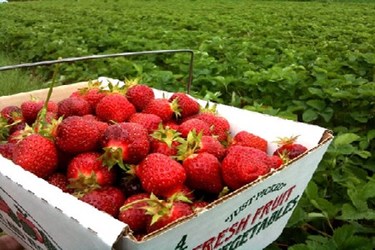Strawberry Compounds Could Provide A Sweet Solution For Processed Foods, But Come With GMO Concerns
By Isaac Fletcher, contributing writer, Food Online

Specific compounds responsible for sweetness in strawberries that have been identified by researchers at the University of Florida could act as a healthy sweetener in processed foods, but does breeding varieties for these compounds come at a price?
Scientists at the University of Florida believe they have discovered the exact compounds in strawberries that give the fruit its sweet, unique flavor. This finding means that strawberry breeders at the university will be able to create more varieties in a smaller amount of time. Researchers believe that these naturally occurring compounds could be used to make processed foods taste sweeter, using far less sugar, and no artificial sweeteners. Additionally, if healthy foods like fruits and vegetables could be made to taste better, people will be more likely to eat them.
Researchers observed 35 varieties of strawberries over two growing seasons and, after conducting extensive biochemical testing and consumer taste panels, identified 30 compounds directly tied to the sweet strawberry flavor that many consumers love. Also identified were six volatile compounds that add to humans’ perception of sweetness but are not linked to any type of sugar contained in the fruit. Strawberries are not the only food being studied to extract such compounds. There is a growing portfolio of flavor enhancing compounds found in other fruits, vegetables, and herbs that researchers are closely examining.
The researchers are part of the Plant Innovation Program, a group of scientists at the University of Florida/Institute of Food and Agriculture conducting research on sensory analysis and the perception of sweetness and flavor in foods. A primary goal of the program is to help people live and eat more healthfully.
This is potentially beneficial news for producers and consumers alike, but what will quickly creating more strawberry varieties mean for the safety of the fruit? Are there other costs that come along with this advancement? Is having more varieties of prolific strawberries worth the potential harm to consumers down the road?
Every form of plant breeding has unknown outcomes — conventional wheat breeding, for example, will result in a plant with some 3,000 alien genes, the strong majority of which the breeder will not know or understand what they might express. Though this has been done safely for thousands of years, sometimes the products of breeding must be withdrawn due to the excessive production of toxins. In 2002 in New Zealand, there was an outbreak of food poisoning caused by the inbreeding of zucchini plants. Conventionally grown zucchini were resilient to an aphid infestation, but the genetically inferior inbred zucchini expressed dangerously high levels of the naturally-occurring toxin cucurbitacin, which caused the outbreak.
Although the new research from the University of Florida could certainly prove fruitful, it does bear some unknowns and concerns. Identifying and applying the strawberry flavor compounds may ultimately provide a new option for sweetness in processed foods, but it will be important to examine the effects on new strawberry varieties to ensure that the fruit remains safe and fit for consumption.
